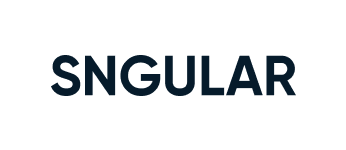The rapid advancement of generative artificial intelligence is causing a real revolution across all domains, including the complex world of healthcare. We are witnessing more and more promising use cases, from medical diagnosis support systems based on the analysis of symptoms, medical records, and images, to semantic search engines on biomedical literature that greatly facilitate research and review of relevant publications, as well as the drafting of clinical texts and medical articles. These are but glimpses into the vast expanse of generative AI’s transformative power in healthcare.
The surge of ChatGPT’s popularity signifies a pivotal shift in enterprise-level LLM’s (Large Language Models) adoption. However, any organization evaluating this technology should consider a medium and long-term strategy and carefully weigh all options before committing uniquely and exclusively to a single model. A strategic approach is paramount. The journey into generative AI is more of a marathon than a sprint, and the race for supremacy in generative AI has just begun. It is very likely that in the short and medium term, alternative models will emerge that may be even more effective, especially in fields as specific as medicine and healthcare. Therefore, it is worthwhile to maintain an open mindset and not rush when standardizing on a particular solution, no matter how promising it may seem today. There are interesting alternatives such as Google’s Med-PaLM, Nvidia’s GatorTronGPT, or many others that offer specific capabilities for different use cases. Hugging Face is currently the platform where you can find multiple LLMs (Large Language Models), including a plethora of emerging models with greater or lesser effectiveness depending on the field of application and specific use case.
Specifically in the field of health, it will be key to closely follow specialized language models trained on huge datasets of high-quality clinical data. Surely the best applied results will be obtained from those models whose training has focused on real medical information.
We are witnessing a competition between large tech companies with proprietary models and open source alternatives, reminiscent of the historical struggle between proprietary operating systems and free options like Linux.
In this dynamic arena, the healthcare, biotechnology, and pharmaceutical sectors must navigate cautiously. The key? Avoiding premature commitments to any single language model or technology vendor. This caution guards against potential ethical dilemmas with sensitive data, economic pitfalls, and the dreaded vendor lock-in. Best practices require not to commit uniquely and exclusively to a specific language model, as it is not at all clear yet which will ultimately be the most effective in each case or the most ethical in dealing with sensitive data. Additionally, maintaining flexibility in infrastructure is essential. This approach prevents dependency on a single cloud provider for all AI needs, ensuring the ability to adapt technological strategies as required.
The call for a versatile, cloud-native AI technology partner rings loud and clear. Healthcare organizations need a truly competent technology partner in artificial intelligence and cloud-native architectures, who can guarantee the necessary independence to implement the best strategy at all times: freedom to change language model, technology vendor, or cloud infrastructure as the industry evolves and business needs.
The demand is for platforms that are not only flexible and scalable but also prepared to integrate a spectrum of generative AI services, based on both the best current models and those that will surely emerge in the coming years. These platforms must be agile enough to harness the power of both current and future AI models, unlocking the full potential of this technology in reshaping health and wellbeing. The future of healthcare lies in the balance of innovation, strategy, and the right technological alliances.
- We're not the average tech partner. We're the next-generation innovators, proving that the unconventional delivers. With decades of expertise in bringing groundbreaking technology services and projects to life for industry leaders, we're not content with the ordinary. We dare to disrupt and transform visionary ideas into reality.
- www.sngular.com

















